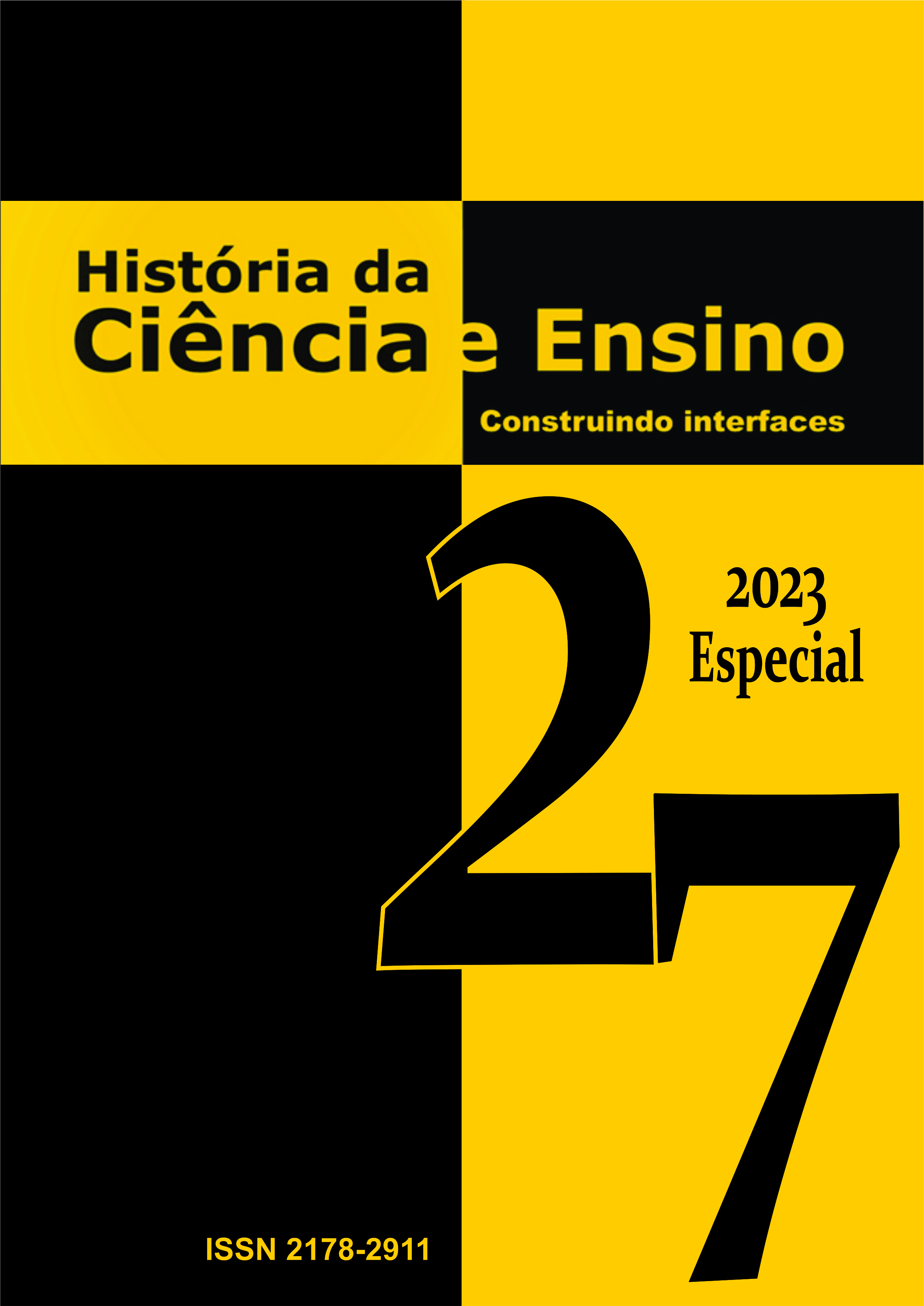The Science’s Outreach Project in Michael Faraday and the Lectures
DOI:
https://doi.org/10.23925/2178-2911.2023v23espp282-298Abstract
This study aimed the main connections linked to the political and Economic mechanisms of late eighteenth-century England had failed to restructure due to untimely industrialization. Such assumptions would lead to major consequences in the first thirty years of the nineteenth century. These pressures were such that London society in particular had to modernize. We are situated in this period where the popularization of science and connections of its diffusion in the daily life of the nineteenth century occurred due to social, political and scientific developments. Basically, utilitarian science and scientific philanthropy, which suggested prioritizing crucial point, in the context. Michael Faraday's (1791-1867) proposal for the dissemination of science was based on argumentation naturally containing metaphysical assumptions, complex experimental method itself, however, elucidative and adequate to the aspects inherent to the study of matter and its forces. The proposal of scientific dissemination was based on teaching and making scientific knowledge public. The subjects originated from Michael Faraday's formal research, or rather, from the investigations experienced inside the laboratory, were disseminated in public lessons with a language of allegories, of studies aimed at the success of science and technology, making the experiment accessible to the understanding of the layman, to demonstrate and recreate an engaging environment, pleasant enough, unlike the "scientific" rigor of the laboratories. Reproduce experiments, disseminate them to young people between 15 - 20 years, reconstructing experiences, with theoretical deepening to stimulate, mainly, to awaken in young people the will to learn to "train the mind", a process also educational.
References
BERMAN, Morris. Social Change and Scientific Organization, 1799 – 1844. Ithaca, New York: Heinemann Educational Books and Cornell University Press, 1978.
DAY, Peter, (org), The Philosopher’s Tree: Michael Faraday’s life and work in his own words. London, Bristol and Philadelphia (PA): Institute of Physics, 1999.
FARADAY, Michael. Experimental Researches in Chemistry and Physics. Londres, Taylor and Francis, 1859.
FARADAY, Michael. Faraday, a história química da vela: as forças da matéria. Trad. Brasileira de Vera Ribeiro. Rio de Janeiro: Contraponto, 2003.
FOOTE, George A. “Science and Its functions in Early Nineteenth Century England”. OSÍRIS 11, 1954, p.438-454. Chicago: The University of Chicago Press. https://www.jstor.org/stable/301681
GOODING, David. “A Convergence of Opinion on the Divergence of Lines: Faraday and Thomson’s discussion of Diamagnetism”. ISIS, 36:243-259.
GOODING, David. “Mathematics and Method in Faraday’s Experiments. PHYSIS XXIX: 121-147.
GOODING, David. “Empiricism in Practice: Teleology, Economy, and Observation in Faraday’s Physics”, ISIS: 47-67.
HAMILTON, J. Faraday: The Life. London, Harper Collins Publishers, 2002.
MERTON, Robert K. “Science, Tecnology and Society in Seventeenth Century England”. ISIS, 1980 (No. 259), p. 589.
NIVEN, W.D. (ed). The Scientific Papers of James Clerk Maxwell. New York: Dover, 1965. Vol. II, p. 505.
REIS. J.B.A. dos. “A Teoria Magnética de Michael Faraday: Experimentos e Idéias sobre o Diamagnetismo”. Dissertação de Mestrado, São Paulo, Pontifícia Universidade Católica de São Paulo, 2000.
REIS. J.B.A. dos. ” A Arquitetura Metodológica em Michael Faraday. Tese de Doutorado São Paulo, Pontifícia Universidade Católica de São Paulo, 2006.
THOMAS, John Meurig. Michael Faraday and the Royal Institution: the genius of man and place. New York: Milton Park, 1991.
TURNER, Frank M. “Public Science in Britain, 1880-1919”. ISIS. Vol, pp. 589-608 (20): The University of Chicago Press. https://www.jstor.org/stable/230502


